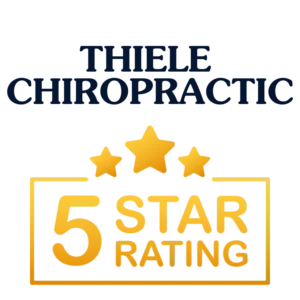- 39 New London Turnpike Suite 120 Glastonbury, CT 06033

Association Between Chiropractic Spinal Manipulation and Gabapentin Prescription in Adults with Radicular Low Back Pain: Retrospective Cohort Study Using US Data
BMJ Open
July 21, 2023; Vol. 13; No. 7; e073258
Robert J Trager, Zachary A Cupler, Roshini Srinivasan, Regina M Casselberry, Jaime A Perez, Jeffery A Dusek: this study cites 79 references.
This study was the first to examine the association between chiropractic spinal manipulative therapy (CSMT) and the likelihood of gabapentin prescription among patients with radicular low back pain (rLBP). Participants were adults aged 18–49 who were having their first episode of rLBP diagnosis. Their mean age was 36 years, and 60% were women.
Only patients with rLBP were included in this study, and this type of LBP often involves neuropathic pain.
[Article Review 22-24: Nerve Pathology and Neuropathic Pain After Whiplash Injury]
Exclusions included severe pathology such as malignancy, fracture, infection, and cauda equina syndrome. In addition, subjects with previous lumbar surgery, scoliosis, spondylolisthesis, lumbosacral plexopathy, myelopathy, fibromyalgia, and multiple sclerosis were excluded.
Eligible patients were from 77 healthcare organizations:
The authors hypothesized that adults under 50 years of age receiving CSMT for newly diagnosed rLBP would have reduced odds of receiving a gabapentin prescription over a 1 year-follow-up.
Usual medical care was defined as a range of medical services besides CSMT, including physical therapy, medications, and interventional or surgical procedures.
KEY POINTS FROM THIS ARTICLE:
1) “The USA has the leading age-standardized prevalence of low back pain (LBP) in the world.”
2) “Together, low back and neck pain account for the leading cause of medical expenditures in the USA.”
3) “Radicular low back pain (rLBP) is often treated off-label with gabapentin or by chiropractors using chiropractic spinal manipulative therapy (CSMT).”
4) “Radicular low back pain (rLBP), which involves a nerve root lesion, is considered a type of neuropathic pain, and involves radiating symptoms into the ipsilateral lower extremity.”
5) “Gabapentin is an anticonvulsant, anti-epileptic medication, used as first-line therapy for several types of neuropathic pain including diabetic neuropathy and herpetic neuralgia.”
6) “Chiropractors are portal-of-entry providers in the USA who frequently treat spinal disorders.”
7) “Studies have found that the initial type of provider seen for LBP influences the subsequent likelihood of receiving a prescription for certain medications.”
8) Disc degeneration and spondylosis may cause axial LBP without radiculopathy.
9) “Neuropathic pain is more common in those with LBP related to lumbar disc herniation compared with lumbar stenosis, scoliosis or spondylolisthesis.”
10) “The age bracket of adults under 50 was selected [because] rLBP is more likely to result from lumbar disc herniation in patients of this age, while older patients are more likely to have lumbar stenosis underlying rLBP.”
11) The natural history of rLBP is that it typically improves over a span of 3 months to 1 year. [Important]
12) Findings:
13) Conclusions:
14) “Gabapentin, opioids and benzodiazepines are… not recommended by several clinical practice guidelines for acute LBP/rLBP.” [Important]
15) Explanations as to why initial CSMT for rLBP could be associated with a reduction in gabapentin prescription include:
16) “Considering that previous randomised controlled trials have found that CSMT is effective in alleviating LBP and rLBP, it remains possible that pain relief afforded by CSMT accounts for the observed reduction in gabapentin prescription.”
17) “[A] previous study found that patients who received CSMT for LBP had significantly reduced odds of having an adverse drug reaction suggesting that reduced prescription of medications used to treat pain could translate into less adverse events.” [Important]
18) “Based on previous literature regarding opioids, it is possible that initiating care for rLBP with any non-pharmacological provider (ie, physical therapist, acupuncturist, chiropractor) would similarly yield a reduction in prescribing of gabapentin.”
These Article Reviews support that chiropractic care reduces the use of opioids:
20-18: Chiropractic Services for Treatment of Low-Back Pain and Use of Prescription Opioids
48-18: Influence of Initial Provider on Health Care Utilization in Patients Seeking Care for Neck Pain
15-19: Opioid Use Among Veterans of Recent Wars Receiving Veterans Affairs Chiropractic Care
48-19: The Initial Healthcare Provider for New-onset Low Back Pain with Early and Long-term Opioid Use

39 New London Turnpike Suite 120
Glastonbury, CT 06033
